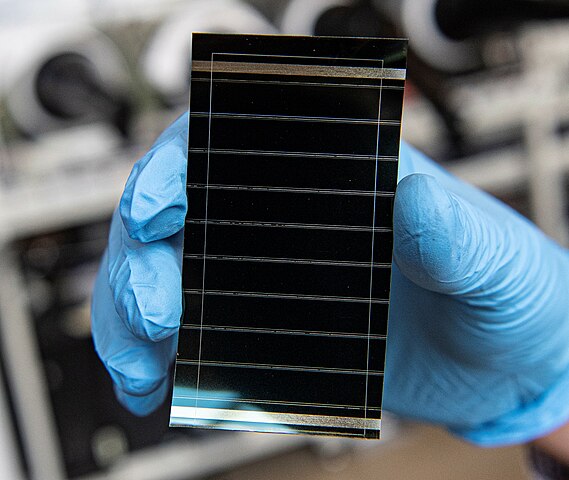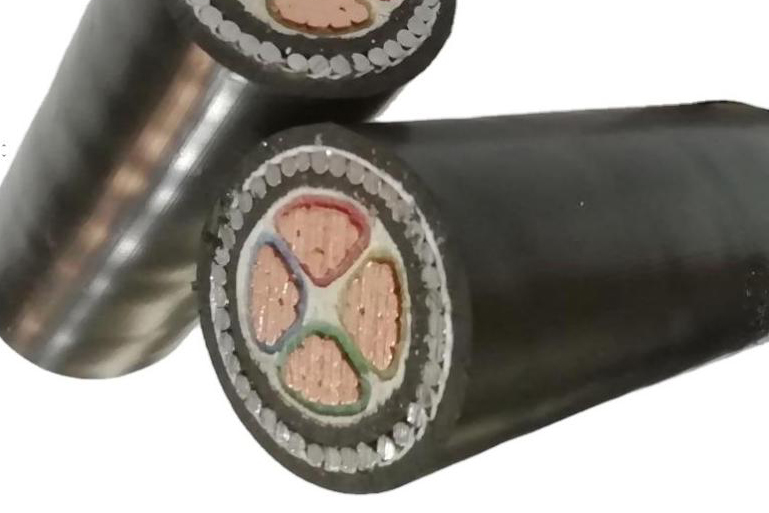
Perovskite Solar Cells: A Cheaper, Better Alternative?
Perovskite solar cells are emerging as a promising advancement in renewable energy. These cells are straightforward to produce, cost-effective, and highly efficient at converting sunlight into electricity. Their unique properties could make solar energy more accessible and affordable for various industries and individuals.
What Are Perovskite Solar Cells?
Perovskite solar cells are inspired by a mineral called perovskite, discovered in Russia in 1839. Scientists have replicated the mineral's crystal structure using a combination of organic and inorganic materials. This innovative approach allows the cells to harness light efficiently while remaining affordable to produce.

By Dennis Schroeder / National Renewable Energy Laboratory
Researchers at the University of Bath have developed powerful simulation tools to model perovskite materials and their application in solar cells. By combining techniques like Monte Carlo and drift-diffusion modeling with machine learning, they've enhanced their ability to optimize the material's properties and performance. These efforts are advancing the reliability and scalability of perovskite solar cells. (Bath University)
What Makes Them Efficient?
The efficiency of perovskite solar cells arises from their unique molecular interactions. According to a study published in Physical Review B, the material's quantum mechanical properties enable electrons to move quickly, enhancing light absorption. This allows the cells to capture sunlight more effectively than traditional silicon-based solar cells. (APS)
Further research published in Nano Letters elaborates on the process, explaining that perovskite cells generate electricity without requiring certain organic molecules found in other solar technologies. This simplification improves the overall efficiency and manufacturability of these cells. (Elsevier)
Benefits of Perovskite Solar Cells
Perovskite solar cells are not only efficient but also affordable. Studies indicate that these cells could achieve energy conversion efficiencies of up to 20%, making them competitive with traditional silicon solar panels but at a lower cost. This combination of performance and cost-effectiveness positions perovskite solar cells as a practical solution for expanding renewable energy adoption.
The environmental benefits are also noteworthy. Unlike fossil fuels, which contribute to pollution during extraction and transportation, perovskite solar cells offer a cleaner alternative. Researchers estimate that harvesting just 1% of sunlight in the UK could meet the country's energy demands, illustrating the vast potential of this technology.
Addressing Key Challenges
While perovskite solar cells show great promise, challenges remain. One of the primary concerns is their stability under prolonged exposure to heat and moisture. Researchers are actively developing protective coatings and encapsulation methods to mitigate these effects. For instance, hydrophobic materials have shown the potential to enhance durability significantly.
Scaling up production is another hurdle. Lab-scale efficiency results are promising, but translating these into industrial-scale production requires innovations in manufacturing techniques. Roll-to-roll processing and spray-coating methods are being explored as cost-effective solutions for mass production.
Efforts to address these challenges are already yielding results. Pilot installations of perovskite solar cells have demonstrated consistent performance in variable weather conditions, paving the way for broader adoption.
A New Opportunity with Stanford Optics
Stanford Optics, a leading provider of advanced optical solutions, is supporting the development of renewable energy technologies by offering high-quality perovskite materials. These materials play a critical role in improving the efficiency and stability of perovskite solar cells. With a focus on quality and innovation, Stanford Optics provides tailored solutions that meet the demands of renewable energy and modern infrastructure projects.
By leveraging perovskite materials from trusted suppliers like Stanford Optics, industries can confidently adopt sustainable energy solutions. For more information, visit Stanford Optics.
-
University of Bath. (2014). Research on perovskite solar cells using the UK's largest supercomputer. Retrieved from Bath University News.
-
Brivio, F., et al. (2014). Quantum mechanical interactions in perovskite solar cells. Physical Review B, 89(15), 155204. Retrieved from APS.
-
Frost, J., et al. (2014). Mechanisms of electricity generation in perovskite solar cells. Nano Letters, 14(5), 2584–2588. Retrieved from Elsevier.
-
UK Energy Research Centre. (2015). Renewable energy potential and its impact on the UK energy market. Retrieved from UKERC.




